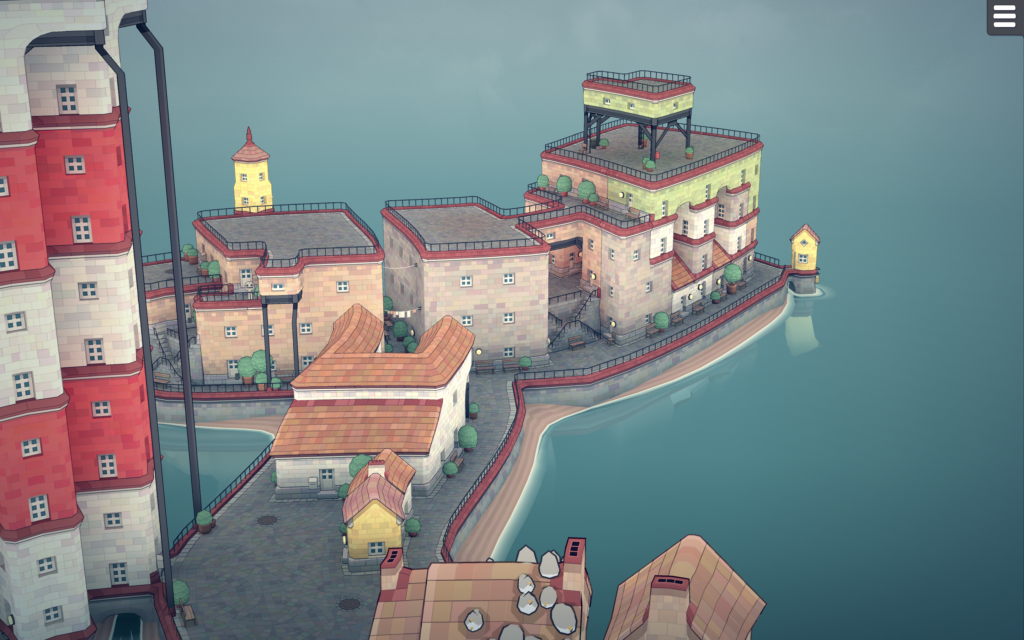
A jolly vew 
of the island tthe island the jolly jooly island 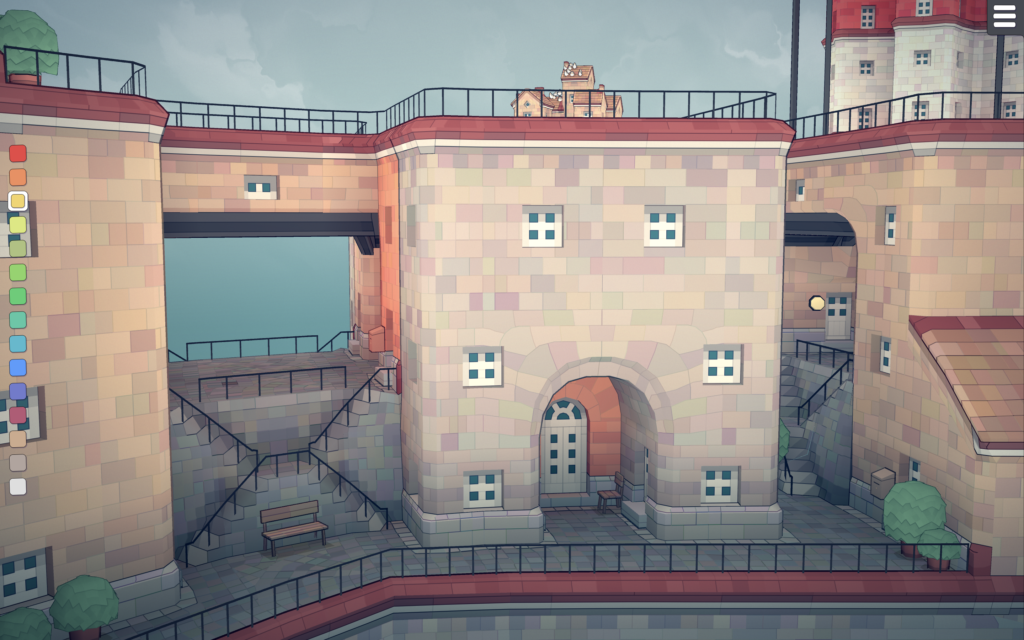
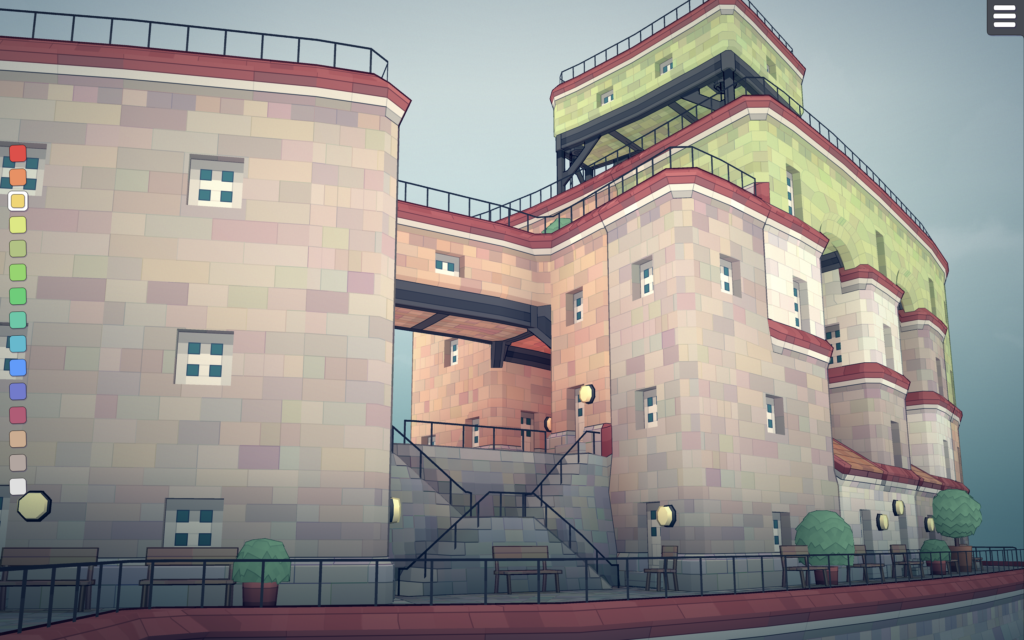
eeee ! its a buildign !!! 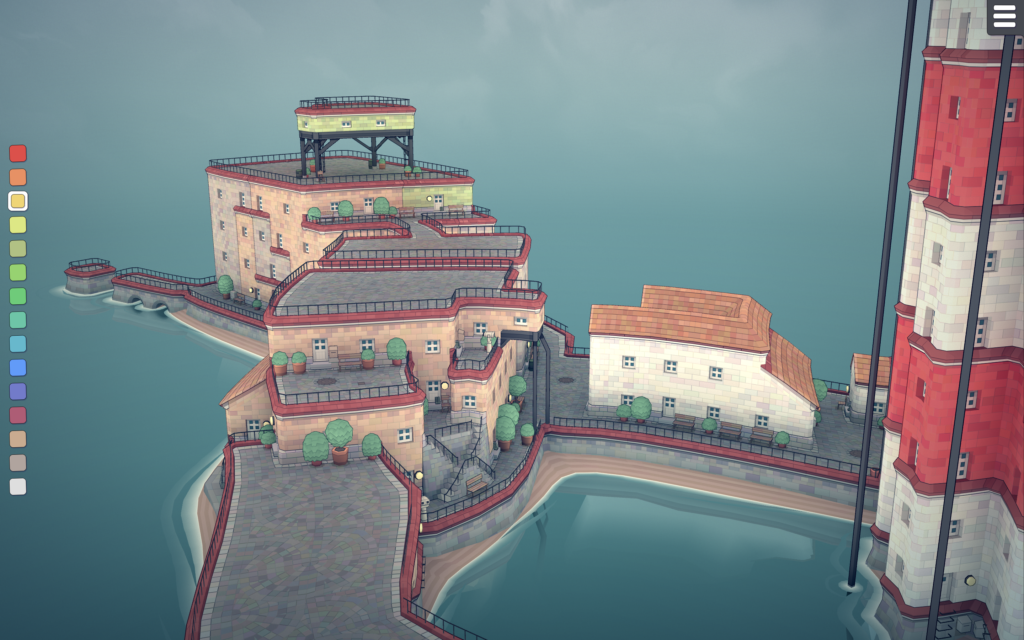
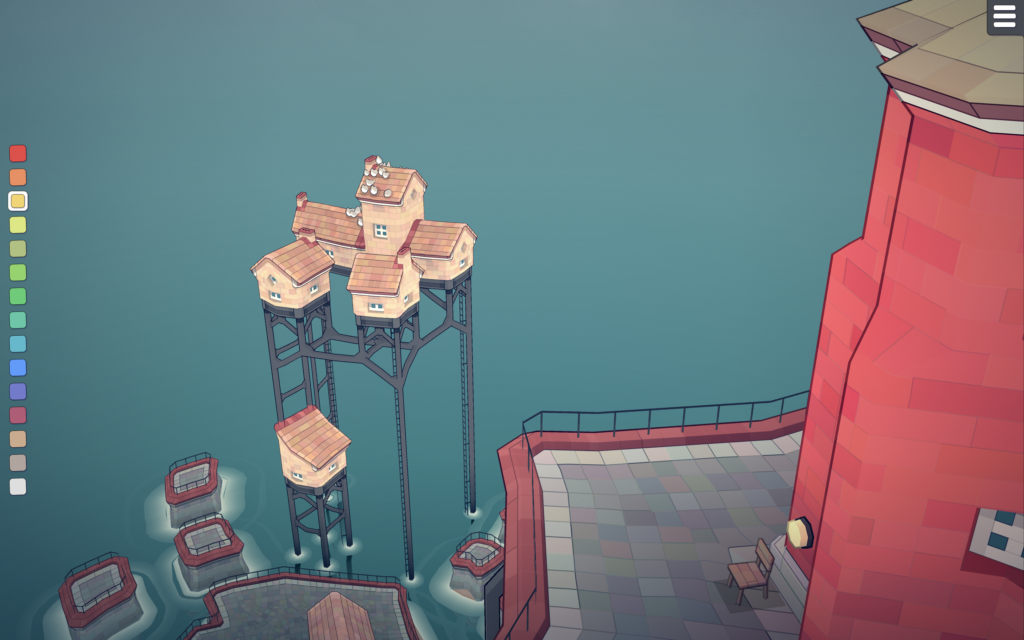
Fenrick Holst was a British inventor—some would say huckster—who, in 1931, occupied an abandoned shipping depot after a series of failed business ventures. Holst brought with him a loose assortment of eccentrics, vagabonds, and tinkerers who he named the Lost Brothers. While none of them was particularly devoted to religion, they nonetheless styled themselves as an order of monks, whose abilities would be applied to a loose, bizarre, and often unstable philosophy they called “Fenrism”.
Notes for visitors
- Be aware that most of the buildings are unsafe to walk in.
- Do not attempt to climb the cargo crane
- The lighthouse is
Holst, manic and unpredictable, was particularly bitter about his latest failing: an antenna/transmitter design he had intended to market in the United States before being driven out of business by RCA. One of his first acts was to install his invention, which he called the “Pan-Cosmo-Vox I”, in the lighthouse. He commenced a series of tests, broadcasting test signals to increasingly distant points in the ocean and measuring the signal strength.
Author Evelyn Swaine, a loose acquaintance of Holst, stayed with the Lost Brothers for two weeks and described it as:
“…if you scoured every shipyard from here to Derry, you couldn’t find a more charmless place, any man-made creation more devoid of appeal—everything was coldly functional, there was no sign of whim or humanity anywhere. It was this forgotten chunk of architectural machinery that these mad men-gone-boys had chosen for their ‘cathedral’; the contrast between the sobriety of the setting and the spirit of its inhabitants was dizzying. The endeavour had all the hallmarks of a leering, self-aware prank that slowly, as it settled in, lost all self or awareness; only the leer remaining, and becoming more demented by the day…”
Map
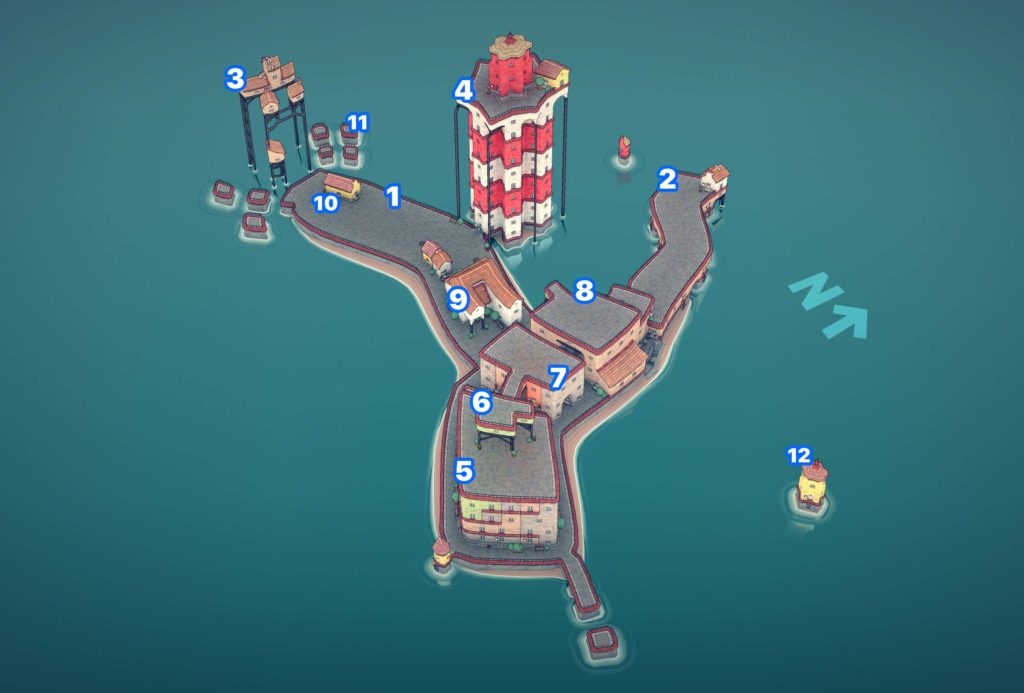
- South Dock
- North Dock
- Remains of shipping crane
- Lighthouse
- Storage hall, converted to living quarters by the Brothers.
- Rainwater tank
- Former offices, now unused
- Former living quarters for depot staff, too dilapidated to be used
- Dockmaster’s office
- Original purpose unknown; Fenrick’s personal quarters
- Abandoned pilings
- Electric buoy, nonfunctional
The cathedral, such as it was, could not have been less suited to its determined task. Old shipping cartons littered many of the floors, and the lower rooms were too damp and drafty to be used for anything. Fenrick himself occupied a small hut at the far end of the south dock, sometimes inviting Swaine to accompany him up the creaking, dangerously rusty remains of the cargo crane, a trip that she described as “tweaking the nose of Death.” Fenrick had installed a transmitter in one of the remaining crane shacks and operated it with Swaine present, often becoming highly agitated by the results, although it was not always clear whether he was pleased or frustrated. Swaine was disturbed:
“…he could spend an hour, easily, hunched over his villainous mix of tubes and wires, poking at it much like a chimpanzee might examine a foreign object. The creation spat and whined at each maneuver, and Fen responded in kind; often he would throw up his hands and scream at the seas, shouting and jabbering in a language I was less and less convinced was my own…”
Holst was not simply having a party, though; he had been planning something. In August of 1932, he left Holst House and returned to England with the Brothers. The Royal Marine Academy had just installed a cutting-edge radio system purchased from RCA, which they planned to unveil. This was the second generation of the competing system that had ended Holst’s Pan-Cosmo-Vox, and which he believed contained stolen elements of his own design. Holst’s intention was to disrupt the broadcast by overwhelming it with his own more powerful transmitter, concealed in a nearby church. If all went well, the group of officials and journalists at the receiving site on North Pitforth Island would not be hearing the planned rendition of “God Save the Queen”; they would find themselves audience to a profane tirade in which Holst would detail how RCA had stolen his design and destroyed his life.
Taking up positions in the church belltower, the Brothers assembled the equipment and checked their watches, flipping the switches at the appointed time. Unfortunately, two of the Brothers had misread their instructions, causing a short circuit; a small fire ensued, quickly followed by chaos when Holst’s batteries—more powerful, but also chemically unstable—exploded, setting fire to the tar-saturated wooden floor. With several Brothers trapped in the tower and the rest fleeing, Holst himself quickly abandoned the scene, quietly slipping out through the cemetery and leaving his followers to be arrested. The RCA demonstration proceeded without interruption. It is not known if Fenrick Holst returned to the cathedral.
